All about apricot flowering

With the onset of spring, it is apricot trees that are among the first to bloom. Fragrant flowers cover the branches even before the foliage appears. During this period, apricots become a colorful and expressive decoration for any garden. Most gardeners are delighted with them. However, many are worried that young buds may suffer from early frost.

How and how many days does it bloom?
Single flowers are located along the entire length of the branch. The inflorescences are simple. They consist of 5 rounded petals of snow-white or pale pink color. The dimensions are considered large, and the diameter is about 2.5-3 centimeters. Despite its simple structure, the apricot bloom looks graceful and charming. It attracts attention with its delicate and romantic color.
The flower calyx is neat and small, assembled from 5 sepals of brown or dark red color. After pollination, at the start of fruit formation, it dies off along with the pistil and stamens.

The male part of the flower contains from 25 to 45 stamens. It looks like a white translucent filament with a yellow anther at the top.

By its name, it is easy to guess what exactly is the place where pollen is stored and collected.
The pistil (the female part of the bud) is formed in the center. The slightly pubescent stigma reliably holds the pollen that falls on it. Over time, she fertilizes the ovule, which is hidden inside. If the pollination process is successful, the flower will grow into a small ovary. It is she who forms the juicy berry, and the rest of the flower will disappear.

Each spring, the sticky flower buds open and become enchanting flowers for sweet fruit to appear on the branches as summer approaches... The flowering period of fruit trees can last up to 10 days.
Required temperature
When the temperature rises to +5 degrees Celsius, the buds are awakened. If the required temperature regime is maintained for a short time, the flower buds freeze again. Flowering will only begin if the warm weather lasts long enough.
The sum of temperatures that exceeds the limit of 5 degrees Celsius must be 300 degrees Celsius to start flowering.
Ideal climatic conditions are calm and calm weather, without sudden changes in temperature and strong gusts of wind. The air temperature is in the range of 17-19 degrees Celsius. Such conditions have a positive effect on fruiting. In many regions, the temperature range is from 7 to 28 degrees with a plus sign, so the yield remains unstable.
When studying apricot trees, experts paid special attention to the question of how a decrease in temperature affects buds and flowers.
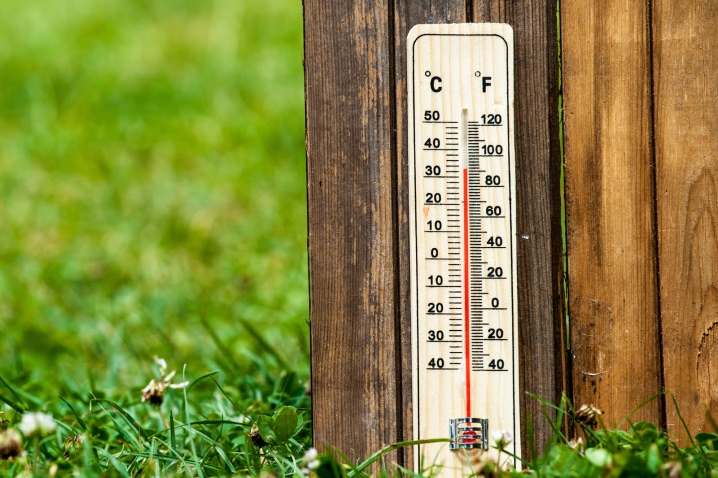
As a result of the study, certain conclusions were drawn.
-
If a specific variety withstands frost without problems, this does not mean that the same feature applies to buds.
-
Apricots are better than apple trees tolerate low temperatures.
-
Firmness of flower buds to climatic conditions significantly depends on what weather conditions were established on the day of opening the buds. If the inflorescences bloom on a cold day, their resistance to a drop in temperature increases significantly.
-
Each element of the flower reacts in its own way to inappropriate temperature conditions. The pistils are most often damaged, and the anthers have increased resistance.This feature is possessed not only by apricots, but also by other stone fruit varieties.
-
Significant but short-term drop in temperature not as dangerous as weak but prolonged frosts.
-
A regime from 1.1 to 5.5 degrees below zero is considered fatal for the buds, but already opened flowers die off at a temperature of 0.5 to 2.75 degrees Celsius with a minus sign. The formed ovaries are not able to withstand the regime from 0 to –2.2 degrees.
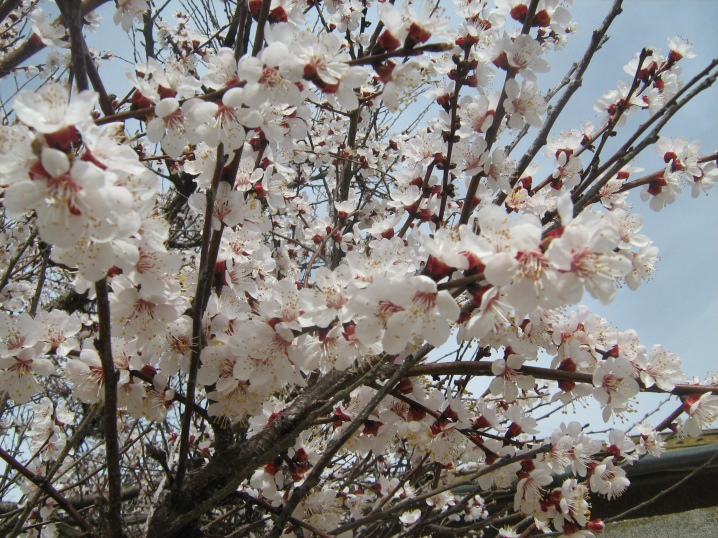
Note: it is also worth considering the characteristics of each individual variety. Some flowers bloom without problems while others freeze.
Terms, taking into account the area of cultivation
The timing of the beginning of flowering also depends on each individual region. As a rule, trees that grow in areas with a warm and comfortable climate are the first to bloom, and in the north this process begins later. Experts have studied this phenomenon and compiled a list of terms for each location. It also lists neighboring countries.
List of regions with approximate dates.
-
On the territory of Armenia the trees are covered with charming color from late March to early April. And also at this time fruit trees bloom in Ukraine. For cultivation on the territory of a neighboring state, special varieties are recommended, for example, Kiev cannery or Kiev handsome. It is worth noting that the timing will vary depending on which region the garden is located in. First, the buds open in the south of Ukraine, then flowering occurs in the central part of the country, in the east and west.
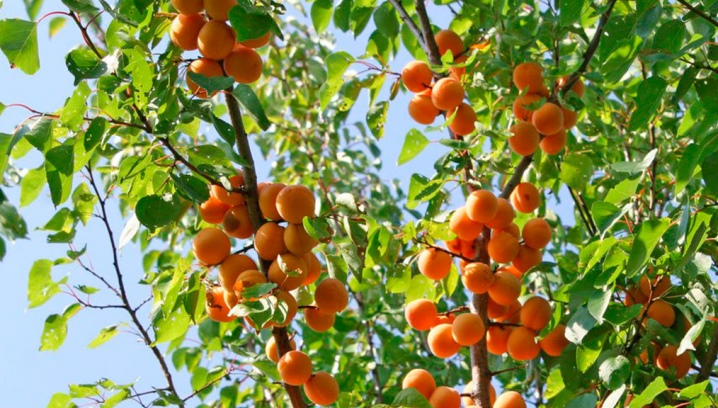
- In the first half of the second spring month, gardens bloom within the boundaries of Krasnodar. This region is famous for its warm and stable climate, which is ideal for growing many fruit varieties. Apricots Parnassus, Sun of the Kuban, Kuban black and other varieties are most often found here.
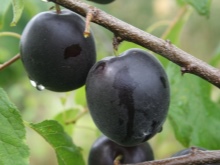
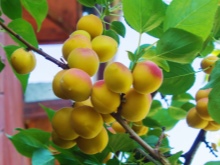
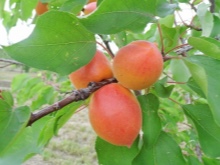
- The next region with a favorable and warm climate is located on the peninsula... In Crimea, the first flowers begin to appear in mid-March. Trees have taken root remarkably in different regions of the region. Recommended varieties for cultivation: Crocus, Veteran of Sevastopol, Nikitsky, Krasnoschekiy.
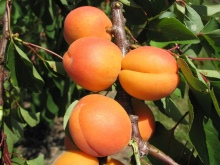
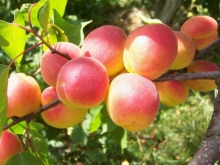

- In Volgograd, the flowering time is shifted to the end of April. If the weather is favorable, you will enjoy the pale pink color in the 20th of April. And also this period often falls at the beginning of May.
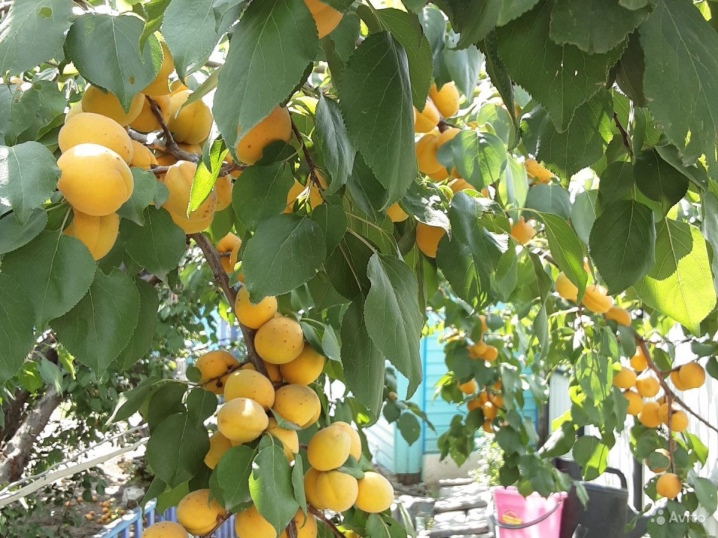
- In the first month of spring, blossoming apricots begin to decorate the gardens of the Caucasus. Varieties Melitopolsky Early and Pineapple Tsyurupinsky are recommended for cultivation in this region. Their characteristic features fit perfectly with the particular climate.
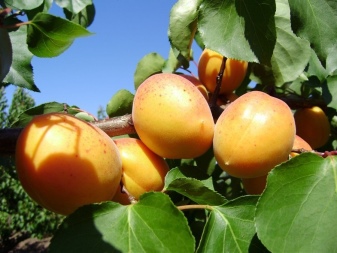
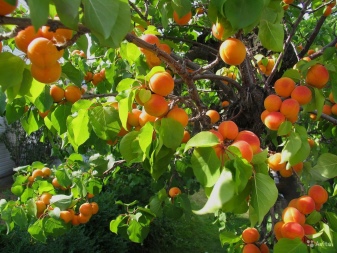
- In central Russia, the dates fall at the end of April and the beginning of May. In conditions of abnormal heat, which are not uncommon lately, flowering may begin earlier. Experts recommend paying attention to the following varieties - Lel, Tsarsky, Black Prince.

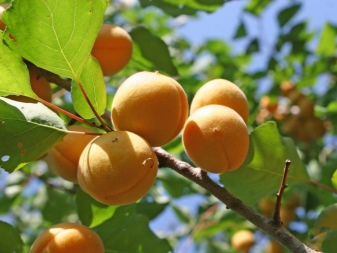
- Only in mid-May, the first buds wake up in the gardens of the Moscow region. Many fruit crops are grown within the boundaries of this region. The region has long been famous for the beauty of nature. Experienced gardeners advise planting the following varieties: Favorite, Iceberg, Countess and Monastyrsky.
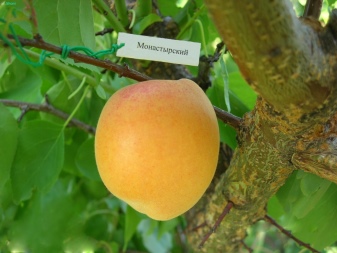
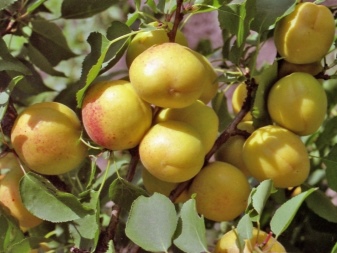
- In the Rostov region, you can often find apricot trees. Flowering starts in mid-April. On the territory of the region, located at the borders of the state, the following species are planted: Fortuna, Melitopol early, Mlievsky radiant.

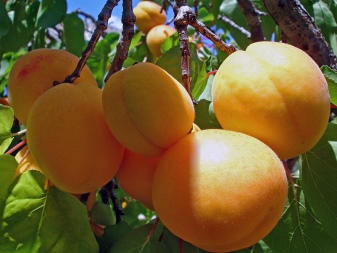
- The last region that we will consider is Voronezh. Here flowering occurs in the second half of spring, from late April to early May. The following varieties have adapted best to local weather conditions: Surprise, Voronezh early, Voronezh aromatic and Champion of the North.
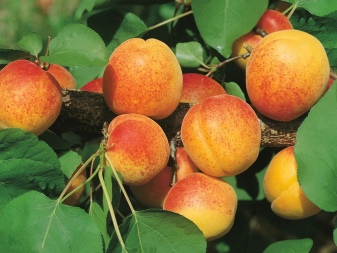
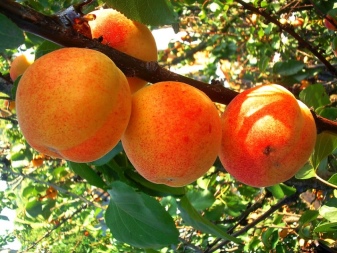
Note: under unfavorable weather conditions and a sufficiently high air temperature, apricots can bloom after planting, if full-fledged buds have already been formed on the branches.
How to delay flowering?
There are several ways in which you can slow down or delay the onset of flowering of fruit trees. And the extension of the dormant period in apricot helps to increase the regularity of its fruiting.
Graft
The first method is considered the most laborious and is not recommended for novice gardeners without experience. A tree that starts blooming early should be carefully grafted onto another late flowering plant. Thorns, plums, cherry plums or wild apricots are suitable as a stock. Vaccination is performed in the spring. In the southern regions, work is carried out at the end of March, and in the rest of the country - in April or May.
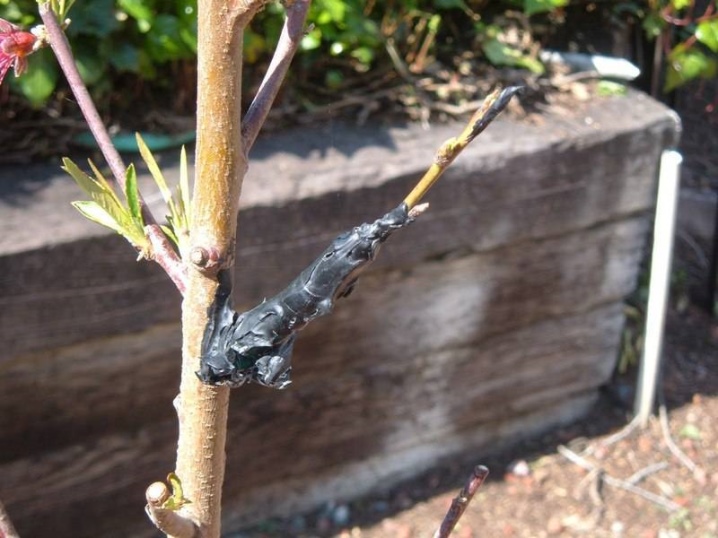
Summer pruning
This procedure will also help adjust the timing. The manipulation is carried out from mid-May to early June. Removing young shoots slows down the development of secondary branches. And also the process of stimulating the bookmark of flower buds is started. They begin to form on the branches of the second and third order. During pruning, the shoots are cut by one third.

Performing all of the above actions leads to the fact that the buds bloom later than usual.
Sawdust mulching
Mulch has long been used in the horticultural field. To protect trees from pests and infections, the ground around the trunk is covered with a layer of peat or manure. After that, snow is shoveled under the apricot, and it is laid with a thickness of 30 centimeters, tamping it a little. Sawdust is poured on top, which is covered with another layer of snow. As a result, the sawdust freezes and becomes a single layer.
With the arrival of spring, mulch keeps the snow from melting, keeping the soil temperature low. In cold soil, the roots will remain dormant longer, which will delay the awakening of the tree and the start of flowering.

Whitewash
Another way is to cover the trunk with slaked lime.... Clay or manure is added to this component. The whitewash layer acts as a thermal protection, it absorbs sunlight, preventing it from heating the barrel. This method is considered the simplest of all of the above.
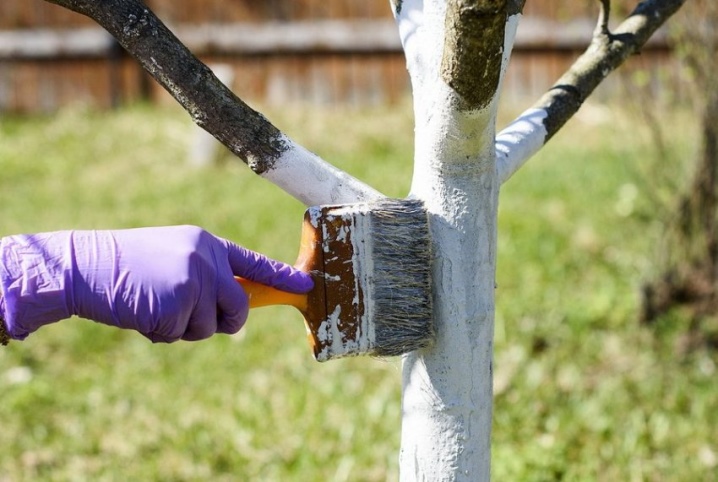
Watering in autumn
Abundant irrigation is performed before the onset of frost, in late autumn. Moisture contributes to the fact that the soil under the tree freezes more, and melts more slowly with the onset of spring. As a result, the blossoming of the buds is delayed. The same result can be achieved by watering trees with cold water in early spring. Watering is recommended by sprinkling.
As soon as the outdoor thermometers drop to zero, the apricots are sprayed with clean water. You can perform this procedure several times for greater efficiency. An ice crust forms on the bark, which will protect the branches and buds from frost.
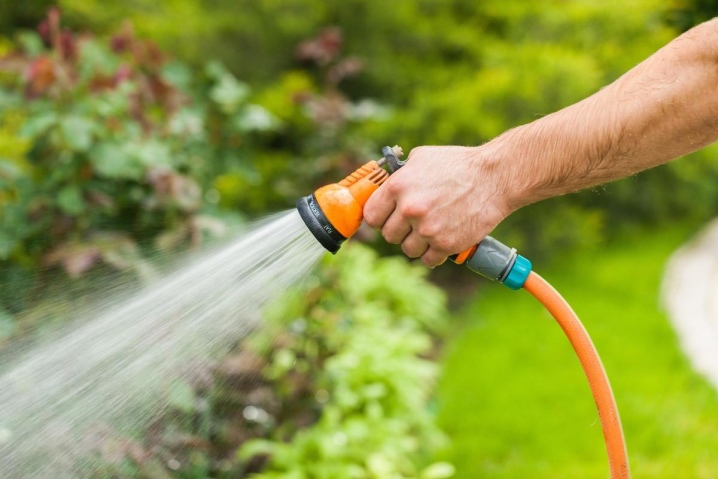
Spraying the crown
The last method we will look at is to spray the crown. The work must be done before bud break. As a rule, this period falls at the beginning of spring.
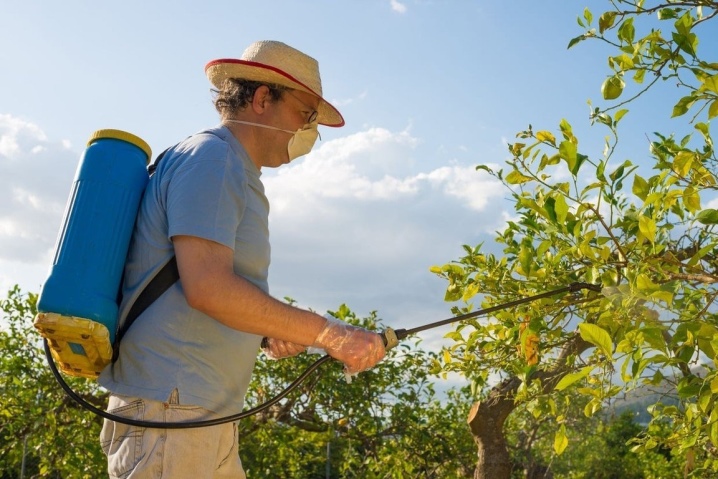
For processing, several formulations are used to choose from.
-
Ferrous sulfate based solution... 400 grams of the drug is dissolved in 10 liters of water.
-
Urea in the amount of 700 grams, mixed with copper sulfate (50 grams) and diluted in 10 liters of water.
-
High efficiency is demonstrated by salt composition. To prepare it, it is enough to dissolve 700 grams of ordinary table salt in 10 liters of pure water.
-
Dissolve 300 grams in the same amount of liquid lime and copper sulfate... The result is a Bordeaux liquid of 3%.
-
A solution of 50 grams ferrous sulfate and 500 grams urea for 10 liters of water.


Why doesn't the tree bloom?
Some gardeners are faced with the problem of not blooming. If fruit trees refuse to bloom with the onset of the warm season, the problem may lie for various reasons.
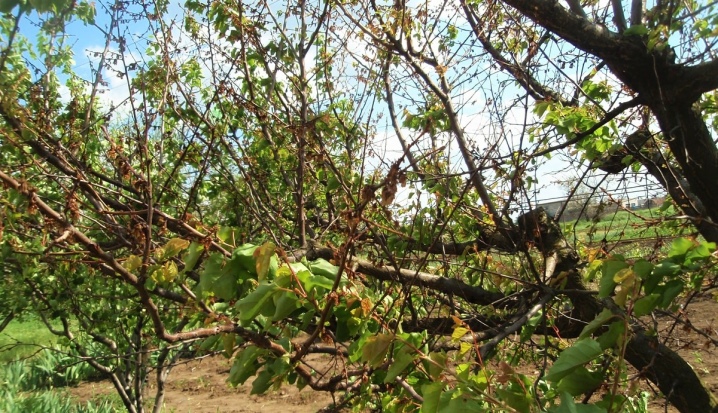
Here are the most common ones.
-
The tree may not have reached the required age yet... Most often, apricot trees delight with the first harvest at the age of 3 years.Some varieties begin to bear fruit later.
-
Apricot can be exhausted by gommosisprovoked by infection and frost.
-
Flowering may not occur due to improper pruning... When performing the procedure for the first time, you need to be careful, adhering to the recommendations of specialists.
-
Another common reason is defeat by serious infections and diseases.
-
If flower buds did not endure the winter cold, they will not bloom with the coming of spring.
-
Unstable weather conditions can rob crops... Often there are cases when, after the buds have dissolved, frosts return, and the flowers die off.
-
Insufficient or excessive fertilization will also be negatively reflected in this process.
-
Perhaps the trees not enough sunlight.
-
At non-observance of agricultural techniques flowering can also be affected.
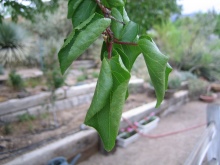

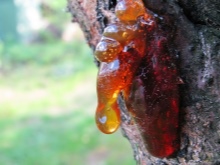
In order for the apricot to bloom and then produce a stable harvest, the following conditions must be met:
-
the selected variety must be suitable for the climatic conditions of a particular region;
-
it is necessary to grow fruit trees in lighted areas that are protected from strong drafts;
-
it is necessary to regularly water the garden, treat the area from pests, and periodically apply top dressing.
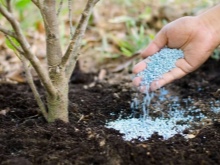
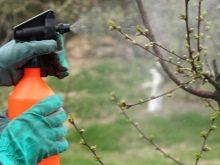









The comment was sent successfully.